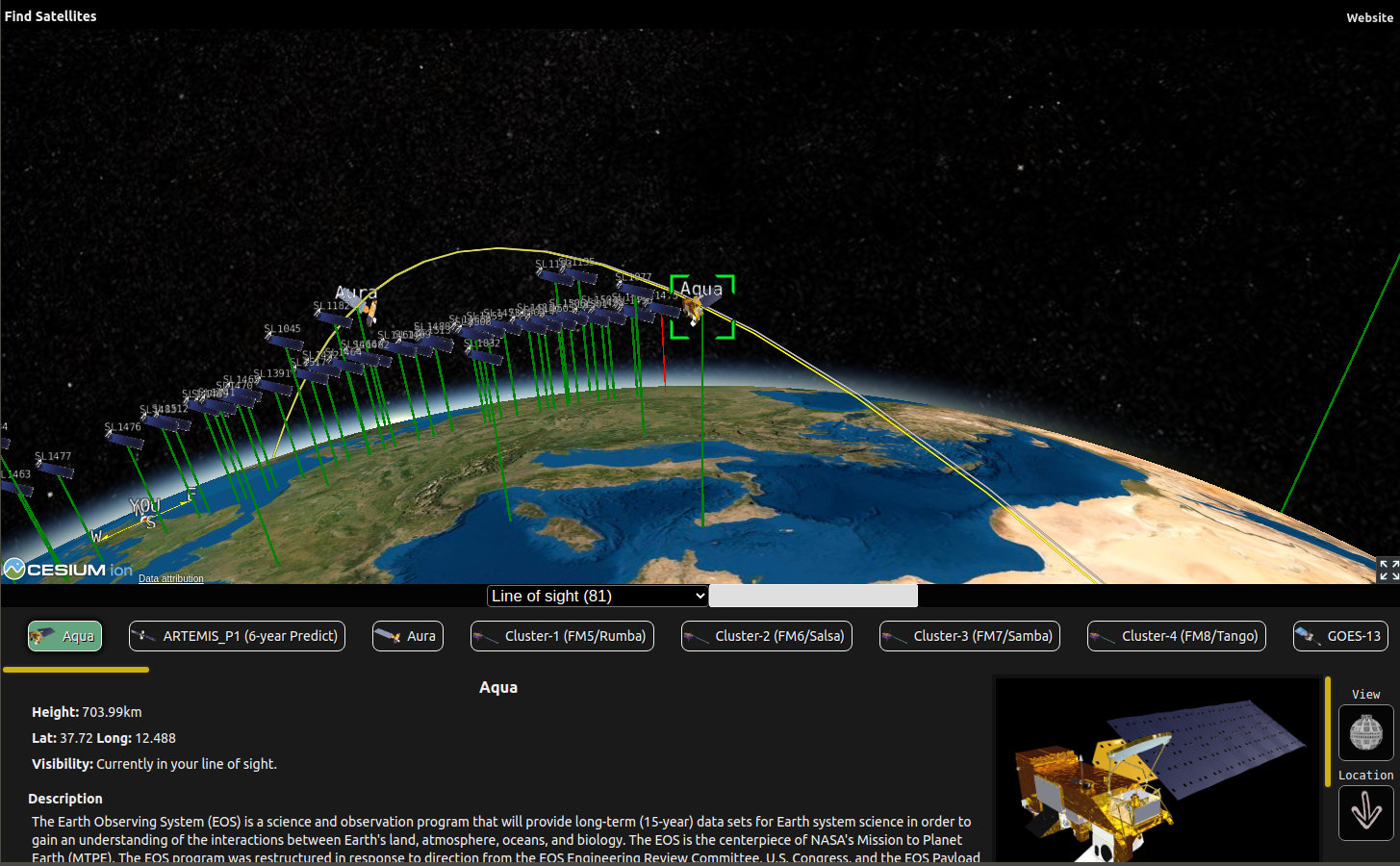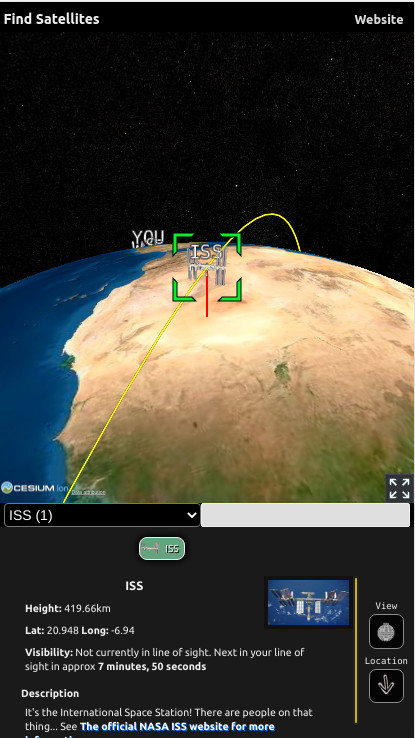Finding Satellites…

Find Satellites is here. It took a couple of months from taking the notion to register this absurdly literal and SEO-minded domain name to getting a functional web app that could at least possibly help someone, somewhere find some interesting satellites in the night sky.

 This screenshot is taken on a desktop display, but since people generally don’t wander about outside at night with a laptop, I thought that it should work just as well on a mobile display
This screenshot is taken on a desktop display, but since people generally don’t wander about outside at night with a laptop, I thought that it should work just as well on a mobile display
To get the most out of the app, you should let it access your location data, but if you’re not keen on doing that for whatever reason, you can manually set it using the arrow button on the bottom right of the app. Just tap the button, then tap on a point on the planet roughly corresponding to where you are, or want the app to think you are.
If you want to see where the satellites are in the sky, just tap the other button (a Telstar when you’re looking down from space) to take a dive down to Earth. From here you can pan around and observe the sky, and using the live mode button on the bottom right, you can move around just using your device if it happens to have the appropriate orientation sensors. To get back up to space, just tap the Sputnik button.
At the time of writing, the app tracks 76 satellites from a NASA feed, and 533 Starlink satellites. The former value can change depending on what appears or disappears from the NASA feed I’m using, and the latter value increases every time Elon Musk feels like the Earth needs more Starlinks. I plan to pull in additional interesting satellites, as there are a hell of a lot of them up there.
Further improvements I’m planning to implement soon include magnitude information, and long-term predictions. Right now, the app can tell you if a satellite is in your line of sight, but that doesn’t mean you’re going to be able to see it if it’s the size of a golf ball, painted black and half-way to the Moon. If I can get some data on how bright each object is likely to be in the sky, then it might be a bit easier for you to figure out what you might be able to actually see. The app can also tell you when a satellite is next going to be in your line of sight within the next 1-2 hours. For things like the ISS or the Starlink trains, it would be good to be able to tell you when you’ll next be able to see them over the next month or so.
Other plans include general optimisation, UI improvements, and any other neat features I can think of or have suggested to me. I’ll update this blog with the details whenever I update the app.
If you find the web app that this blog is hiding inside at all useful or interesting, you are more than welcome to Buy me a Coffee. Without coffee, no staying up coding until 4am.